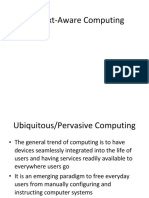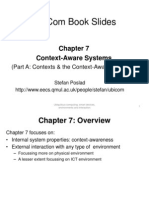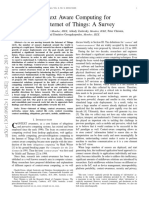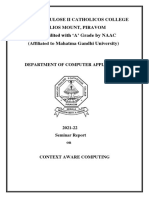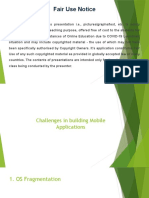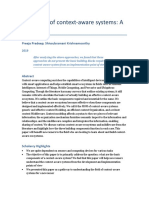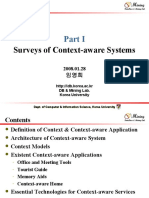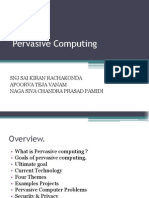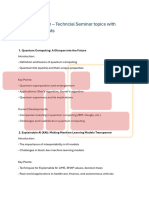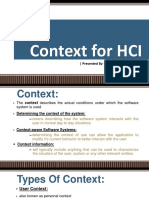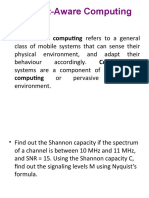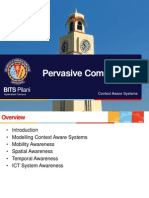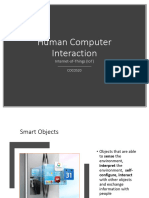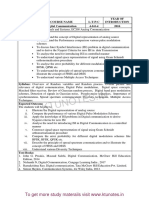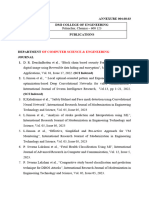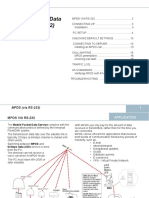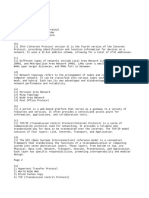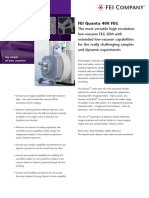0% found this document useful (0 votes)
31 views12 pagesContext Aware Computing
Context-aware computing enhances user experiences by anticipating needs through data about users and their environments. It involves data collection, context modeling, and adaptive actions, while facing challenges in data integration, privacy, and scalability. The future of this technology promises more intelligent and personalized interactions, particularly with advancements in AI and IoT.
Uploaded by
kshitishbehuria4Copyright
© © All Rights Reserved
We take content rights seriously. If you suspect this is your content, claim it here.
Available Formats
Download as PPTX, PDF, TXT or read online on Scribd
0% found this document useful (0 votes)
31 views12 pagesContext Aware Computing
Context-aware computing enhances user experiences by anticipating needs through data about users and their environments. It involves data collection, context modeling, and adaptive actions, while facing challenges in data integration, privacy, and scalability. The future of this technology promises more intelligent and personalized interactions, particularly with advancements in AI and IoT.
Uploaded by
kshitishbehuria4Copyright
© © All Rights Reserved
We take content rights seriously. If you suspect this is your content, claim it here.
Available Formats
Download as PPTX, PDF, TXT or read online on Scribd
/ 12
